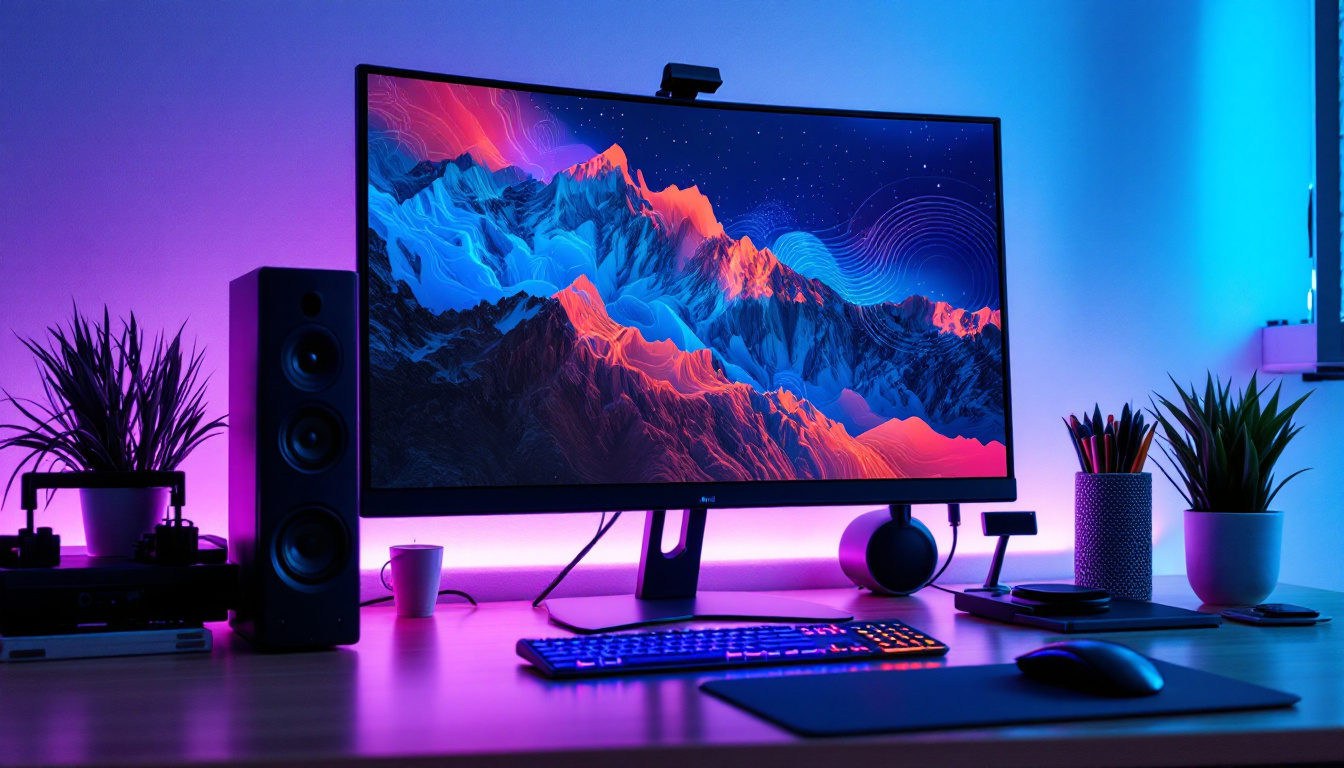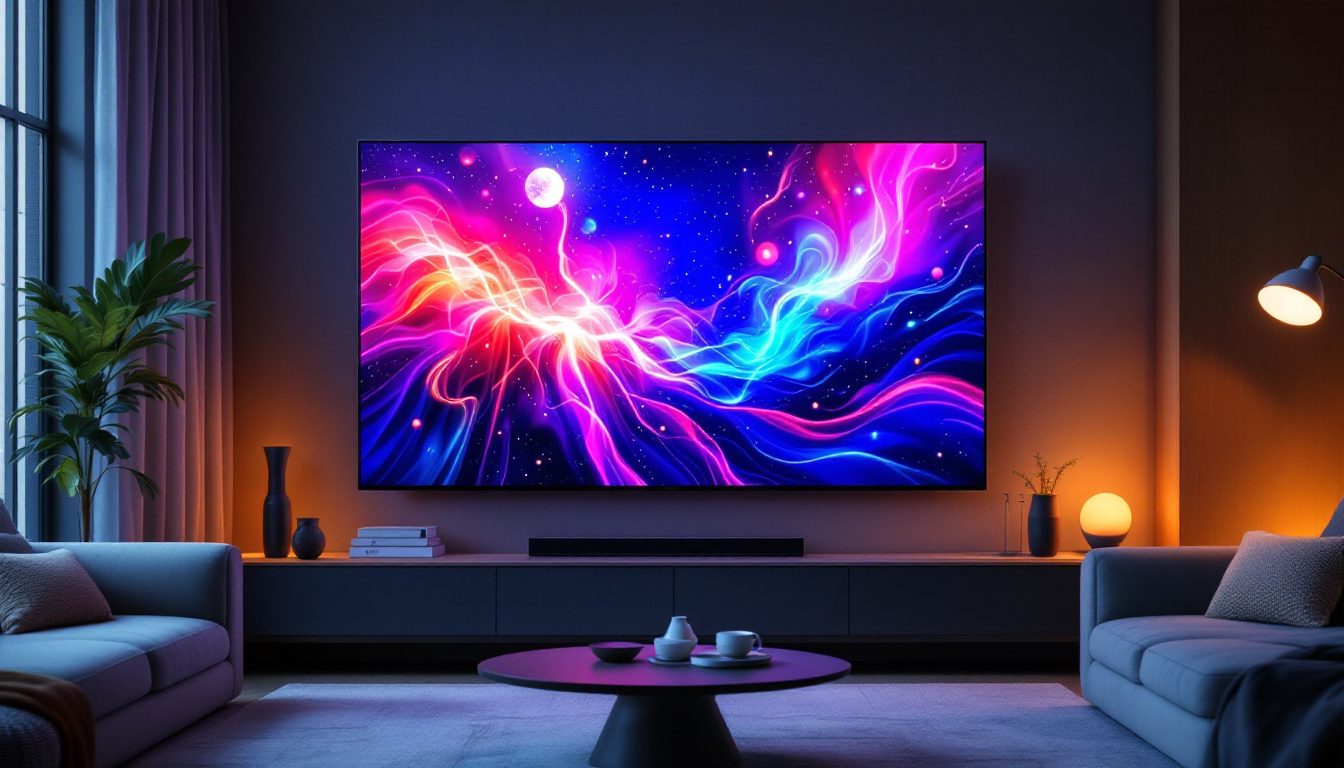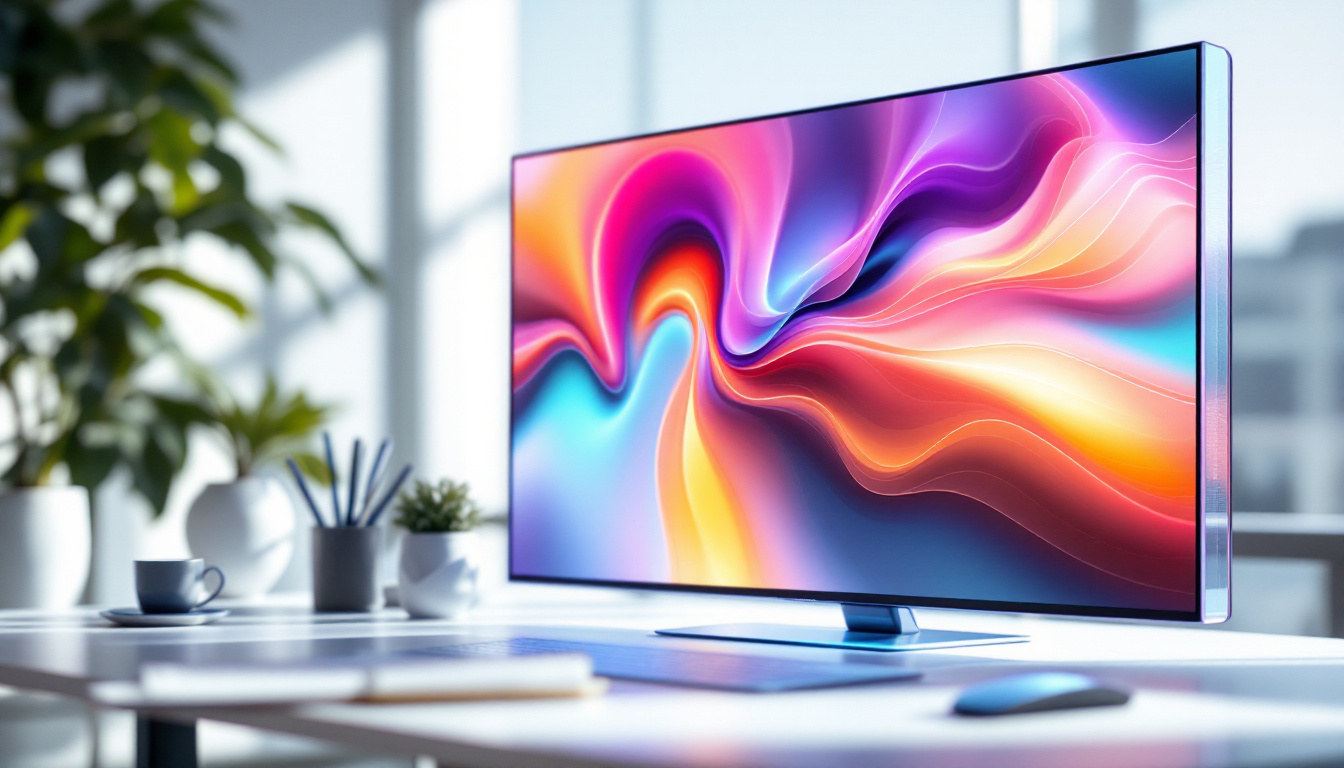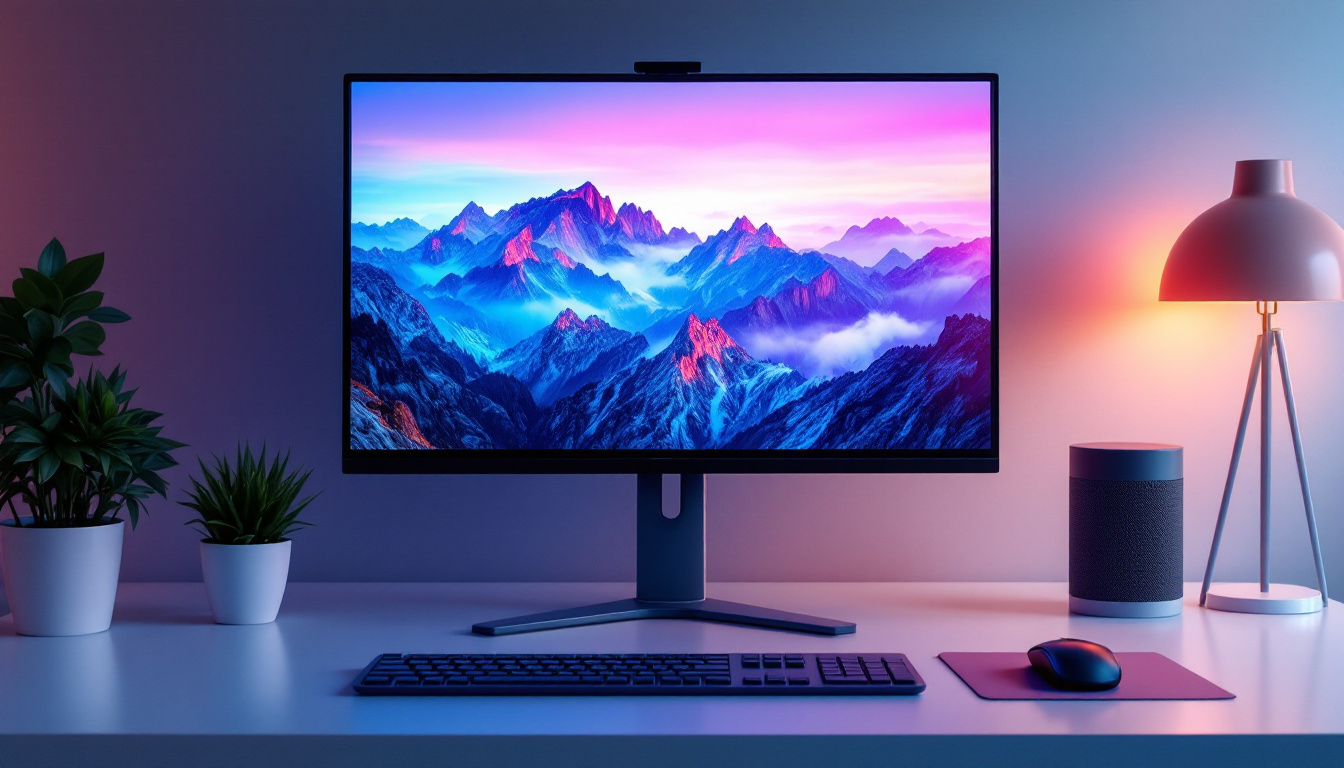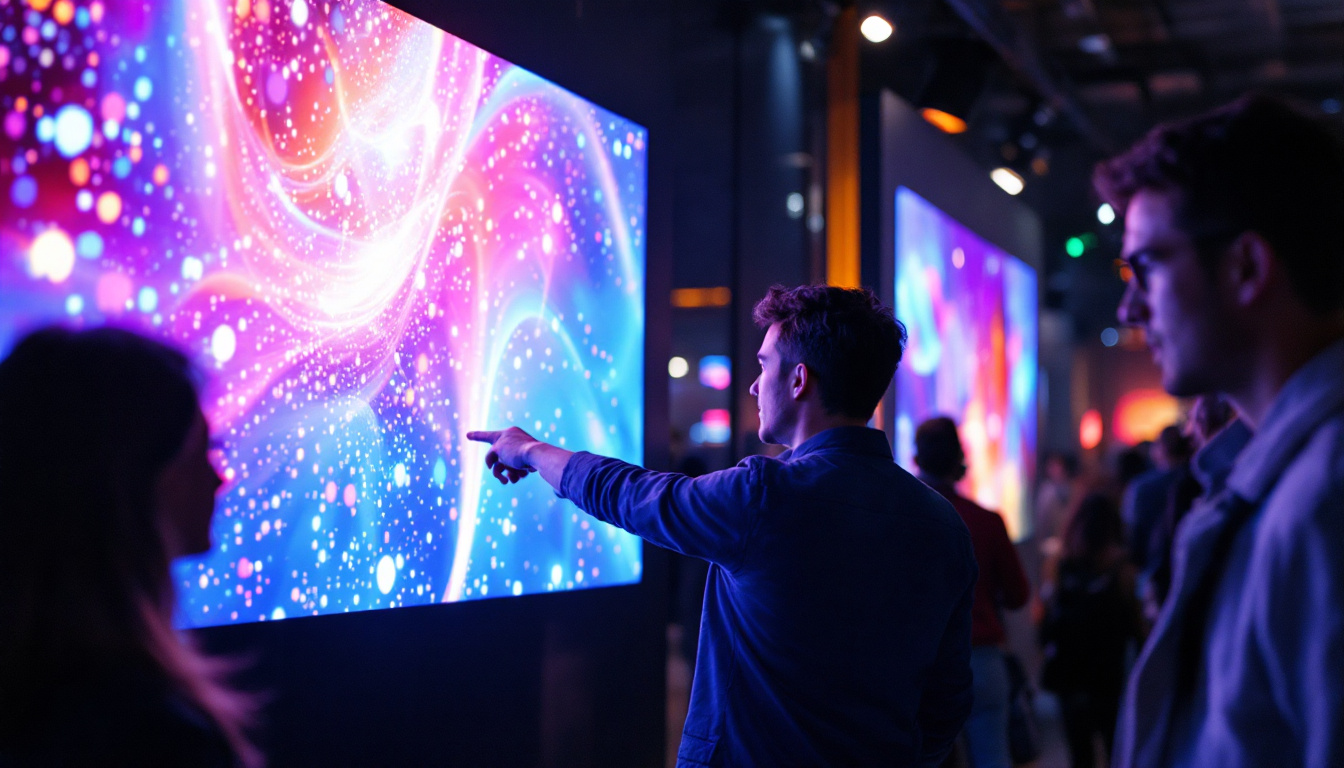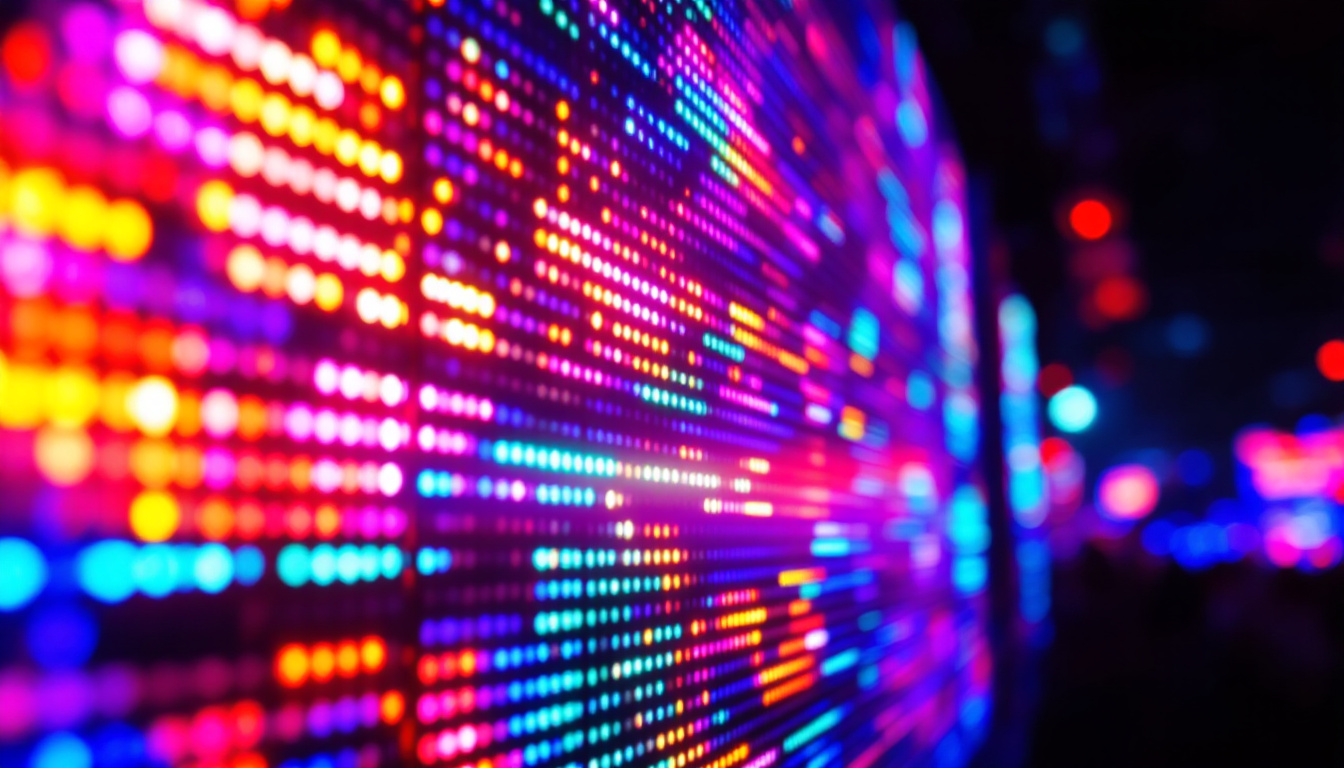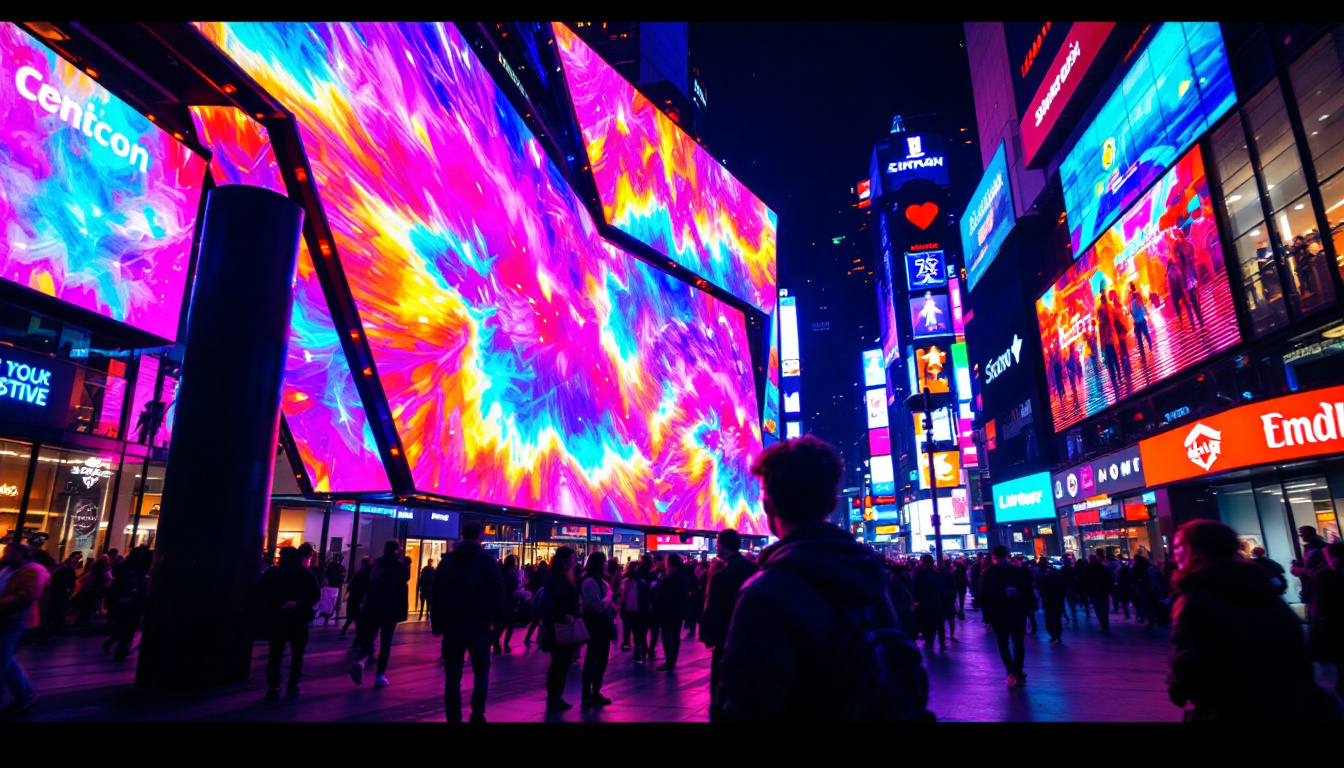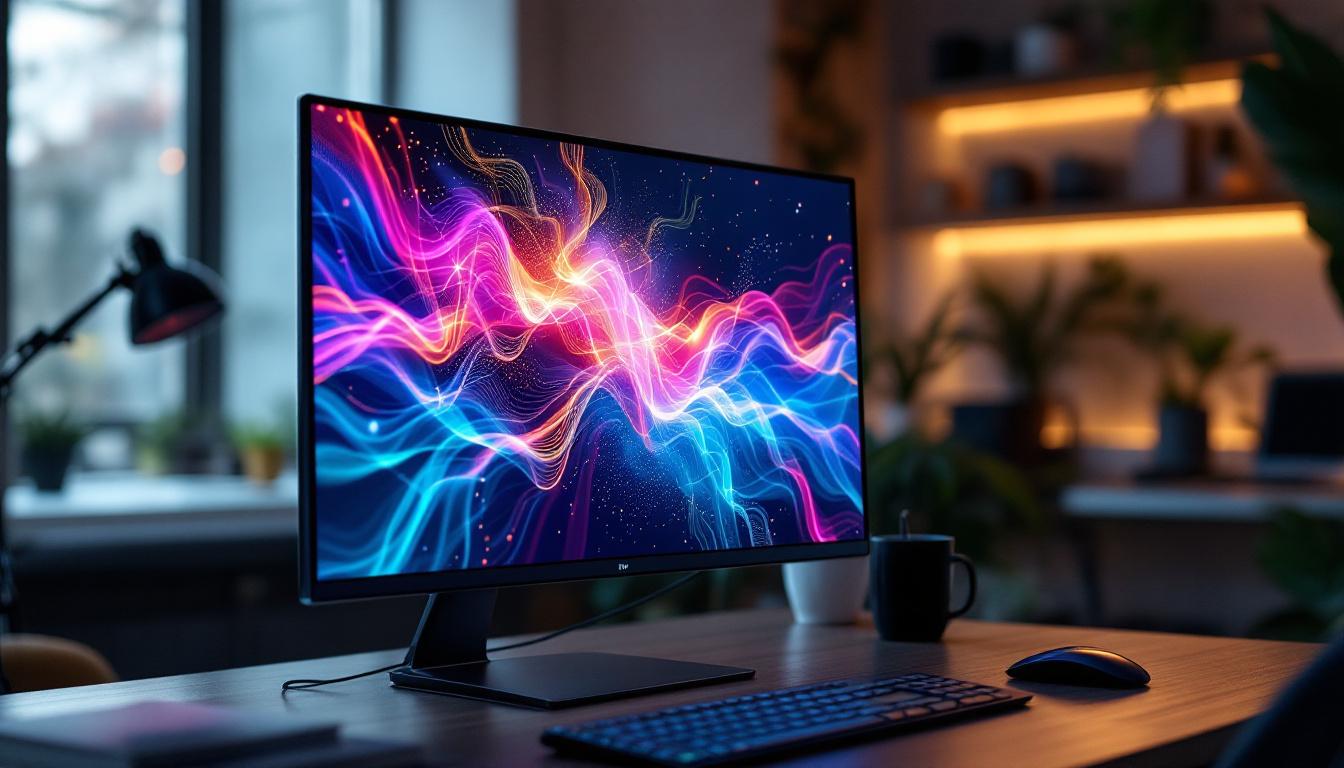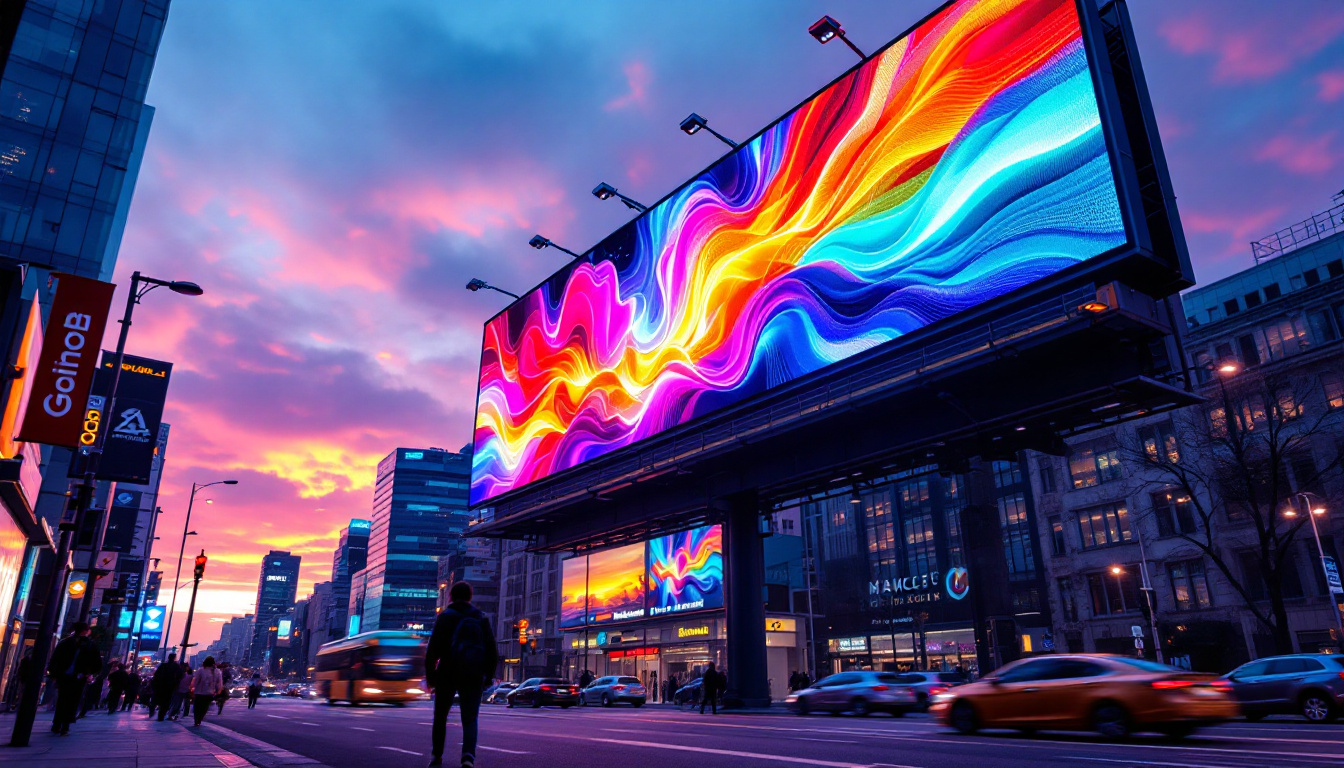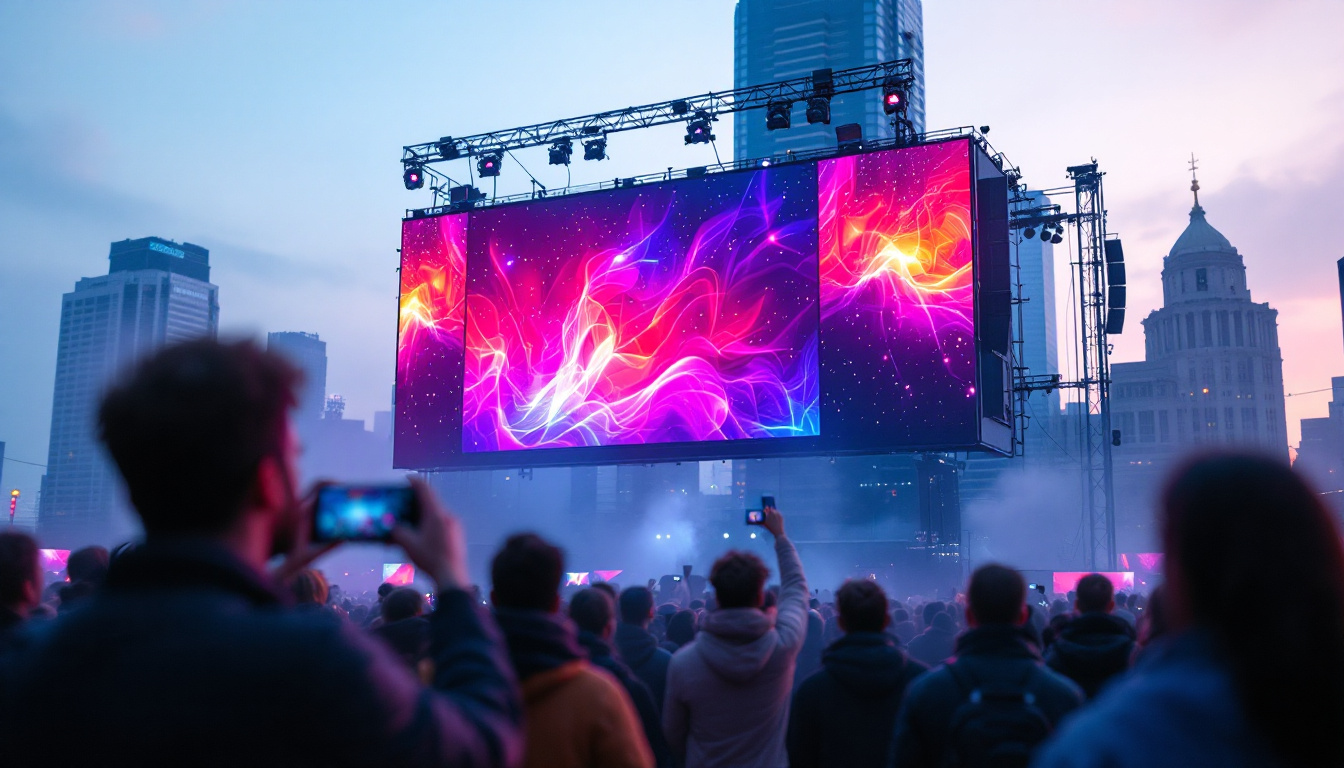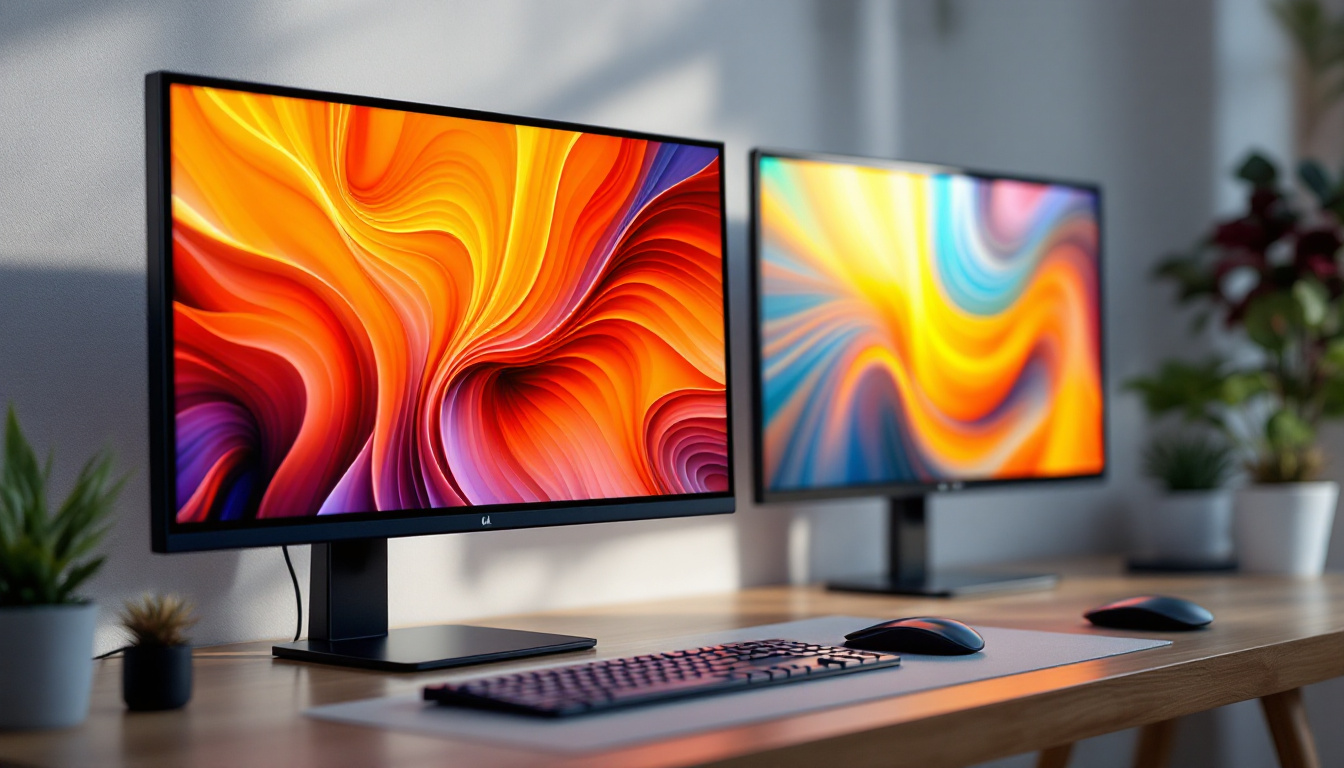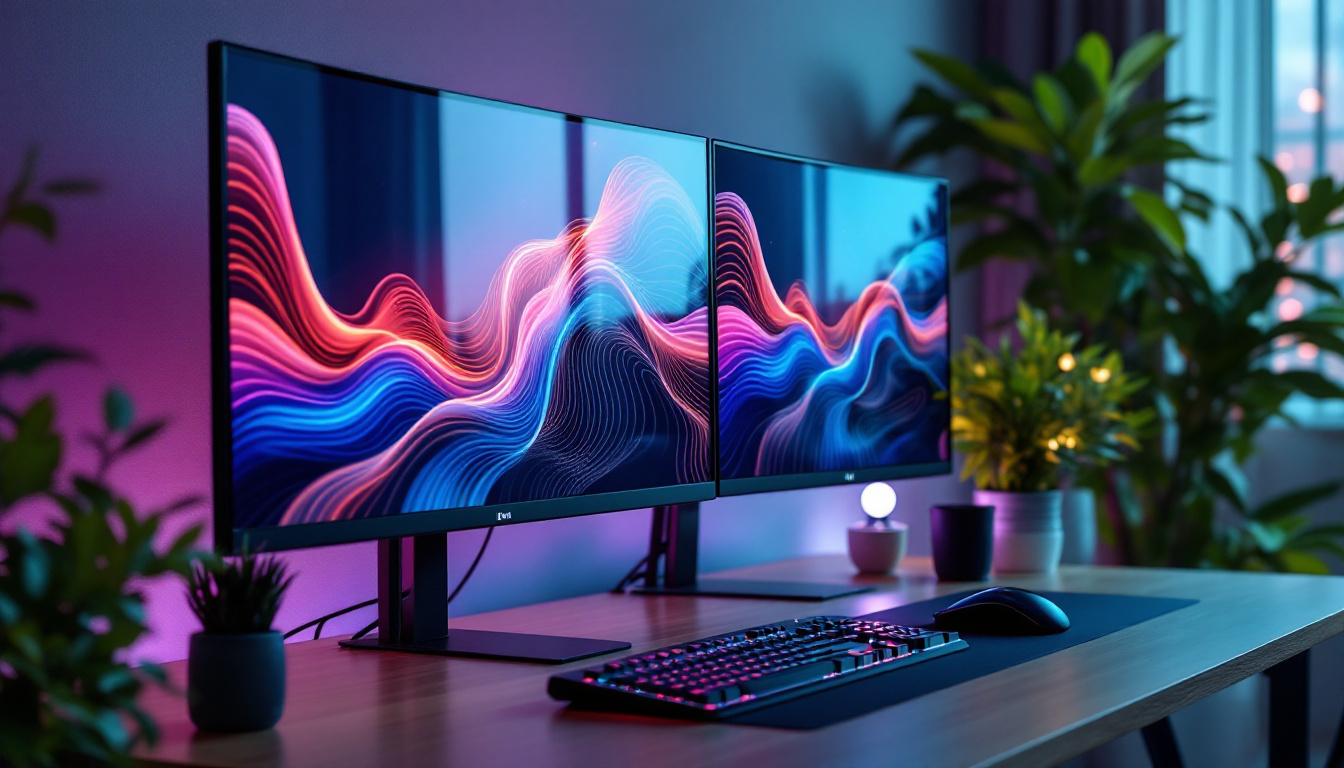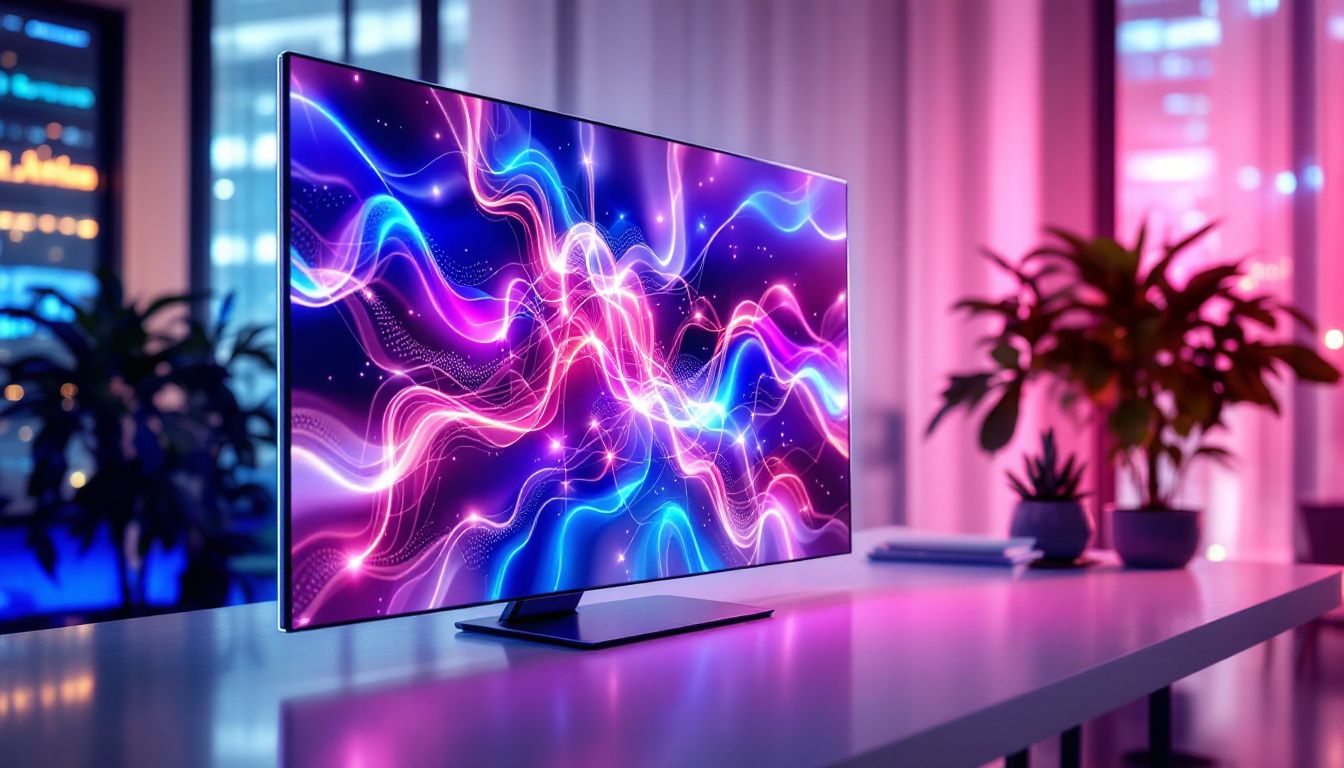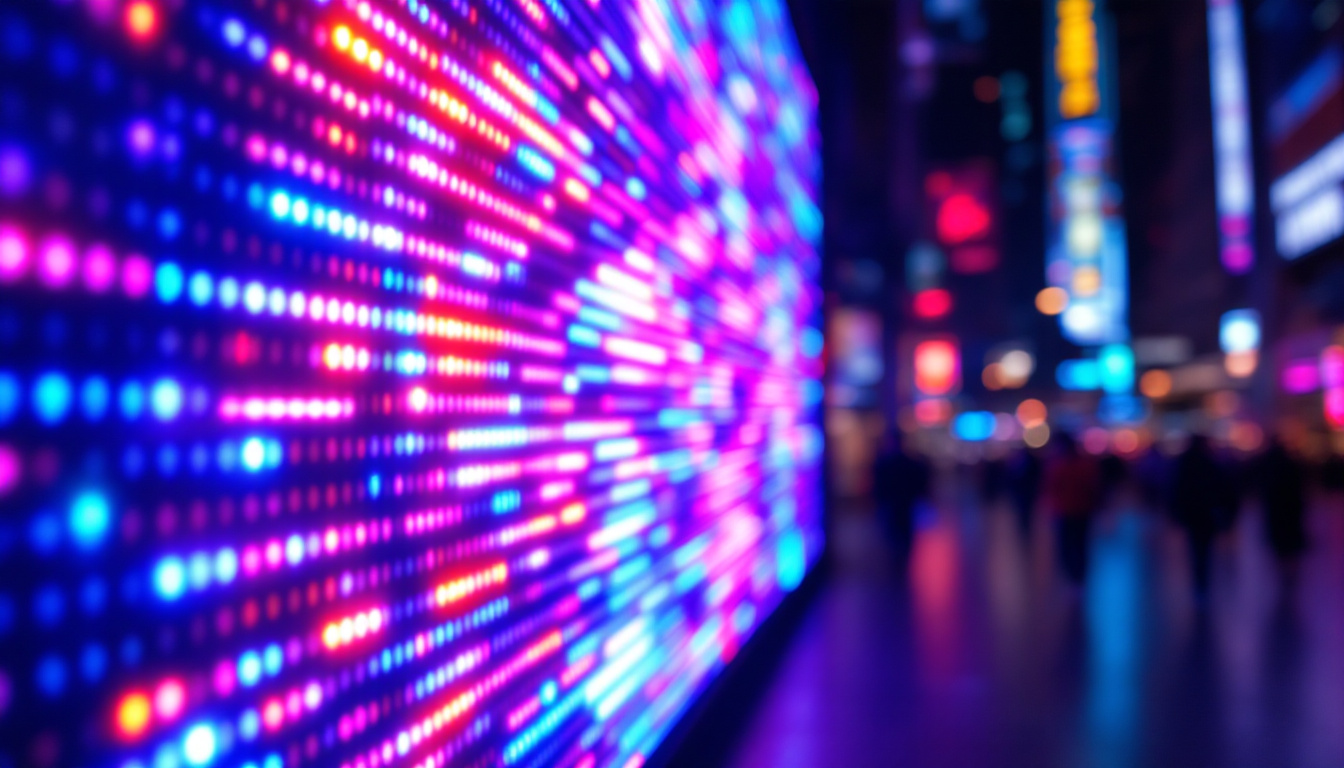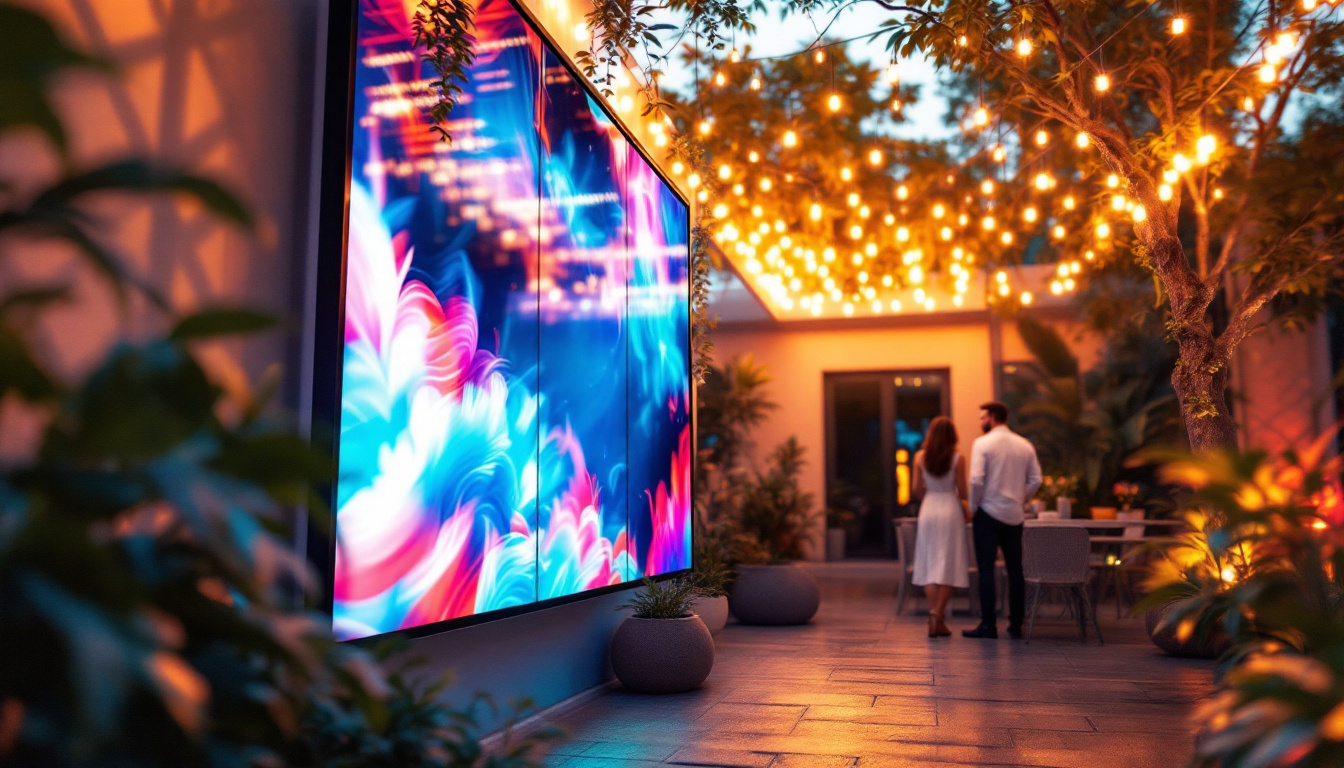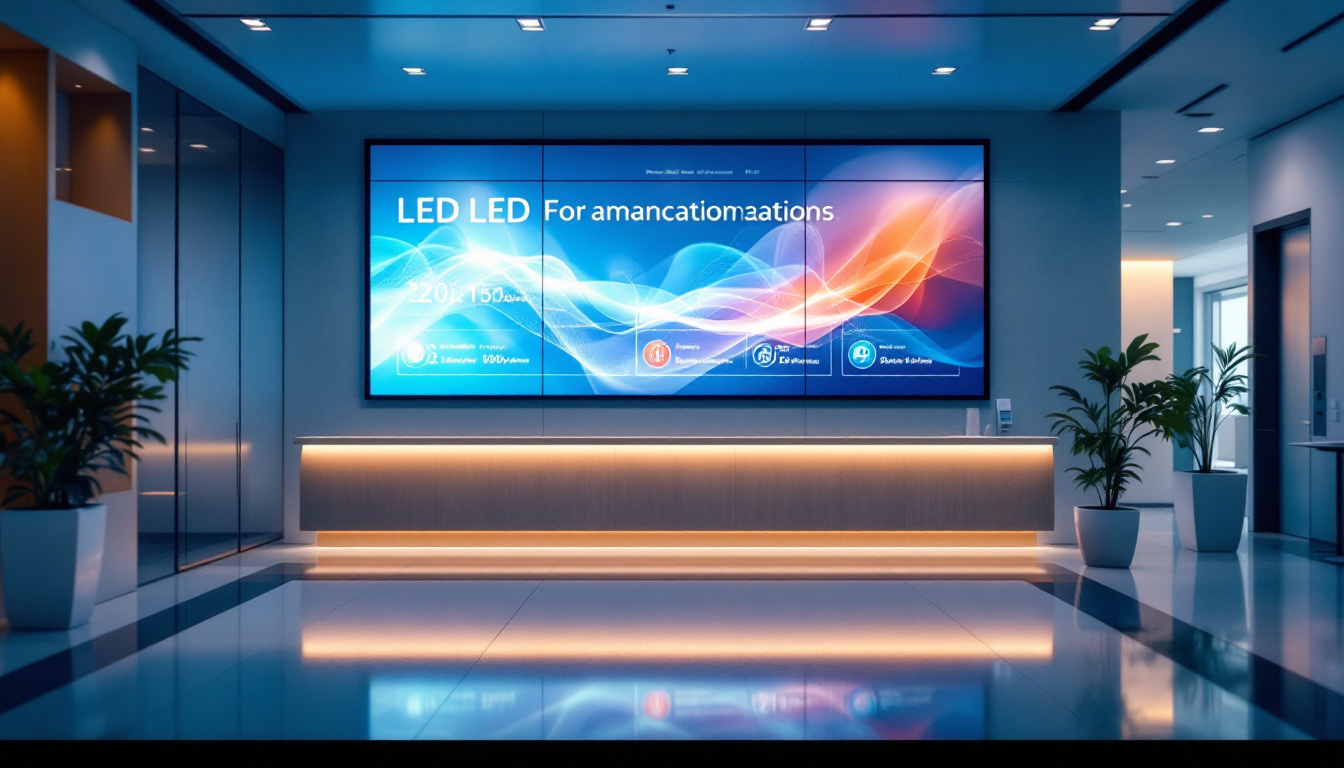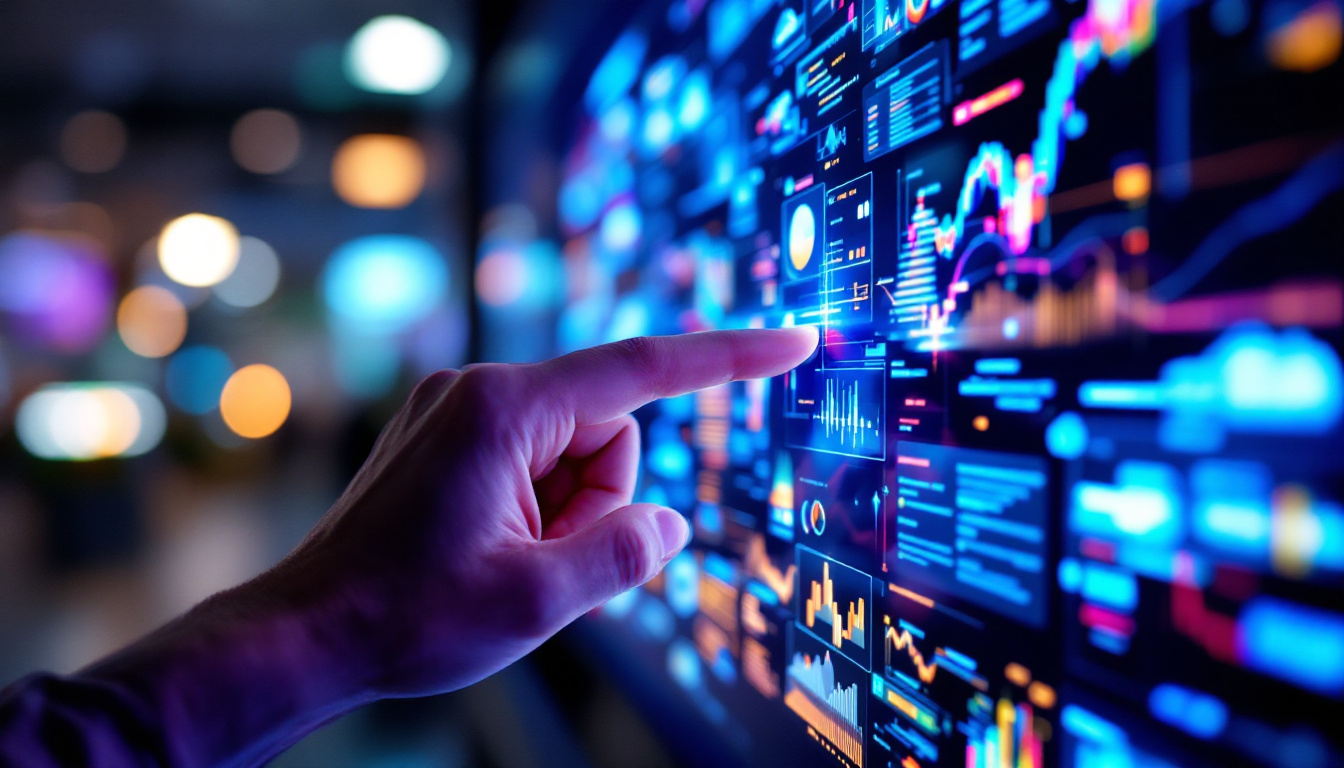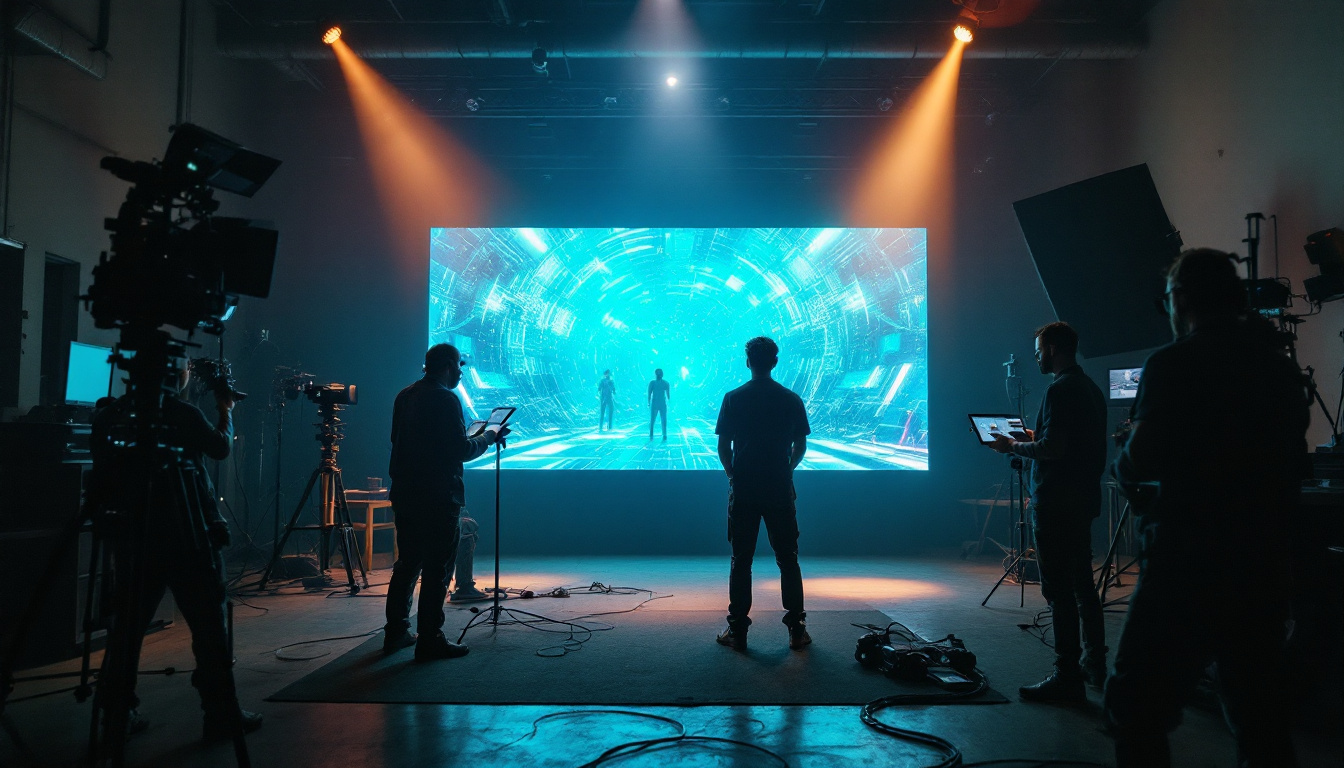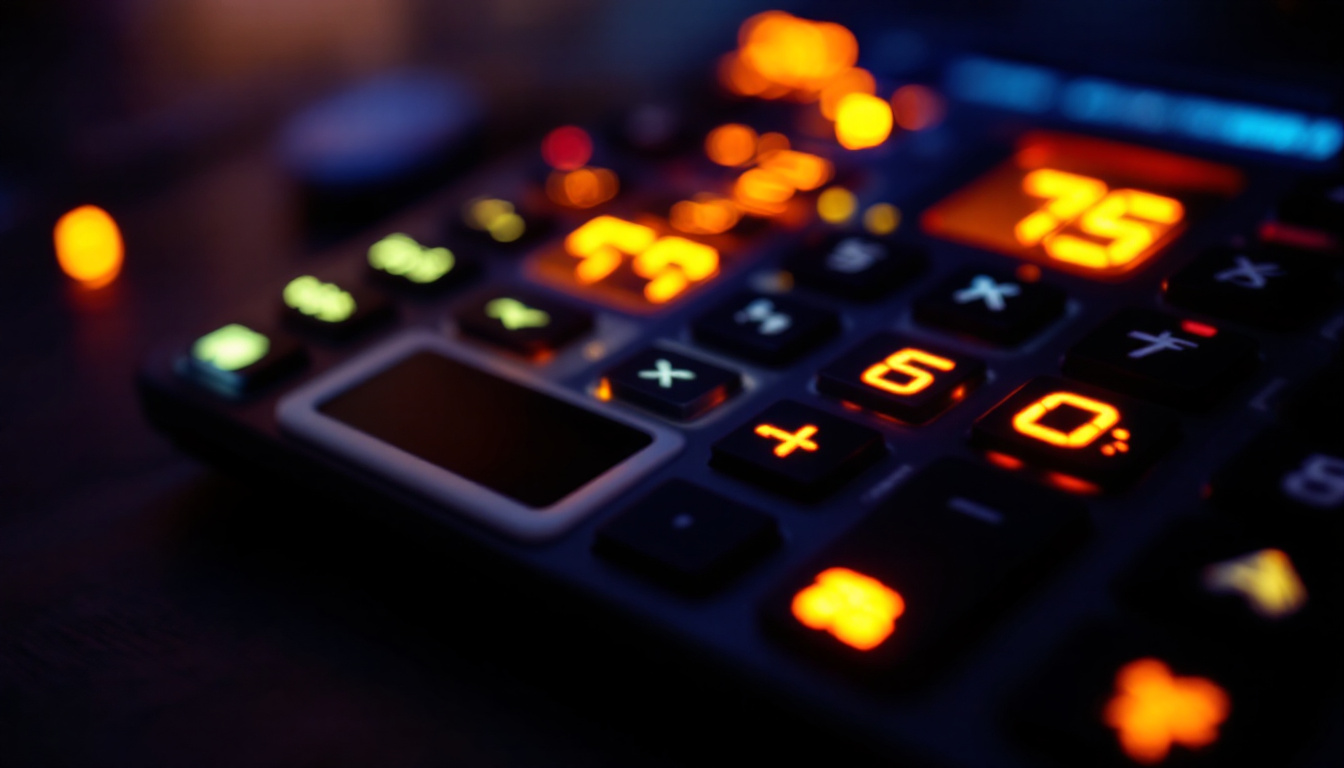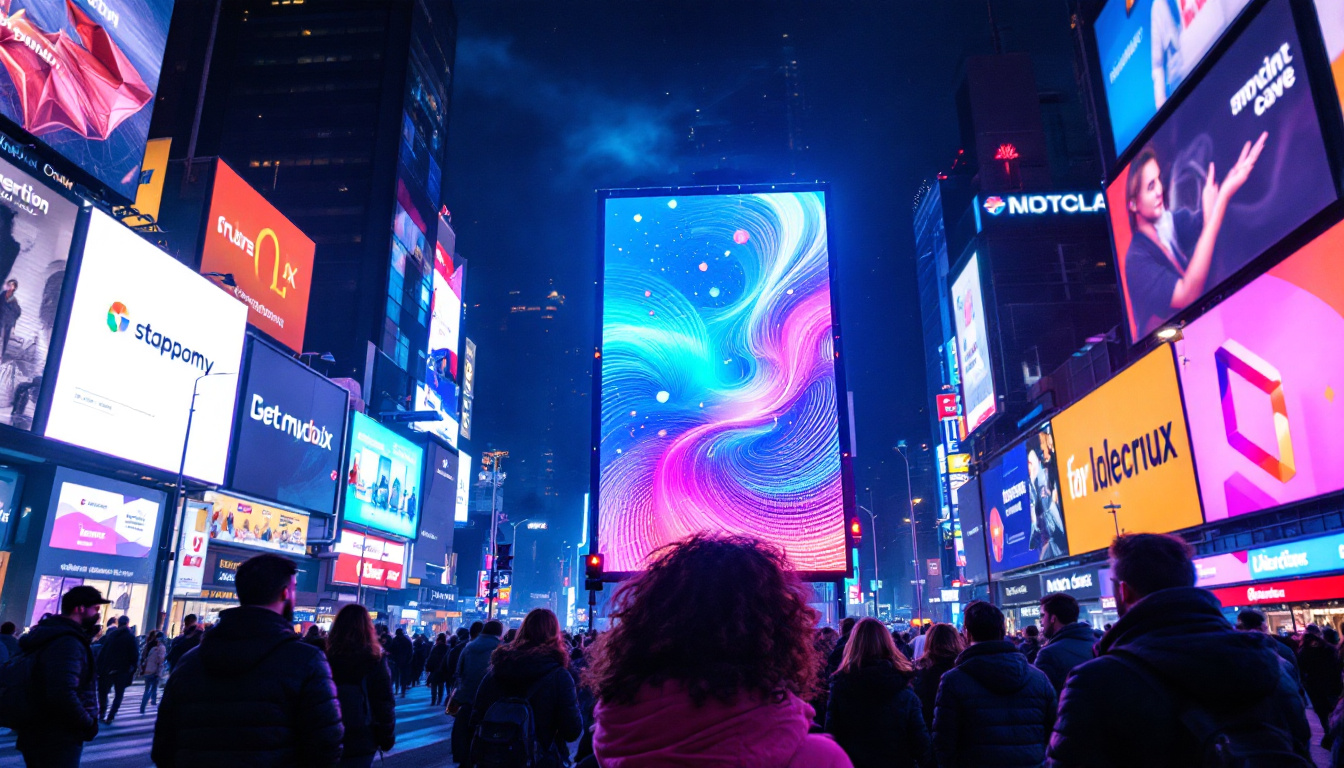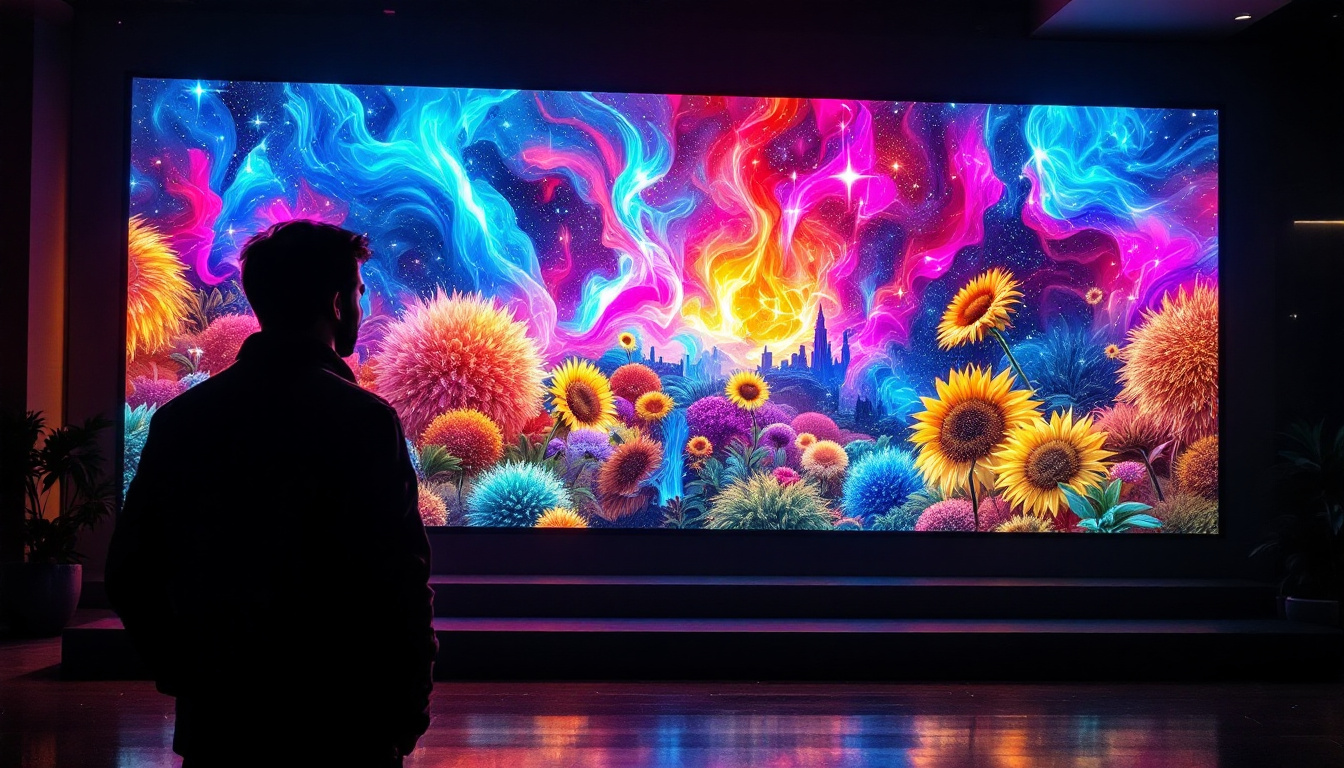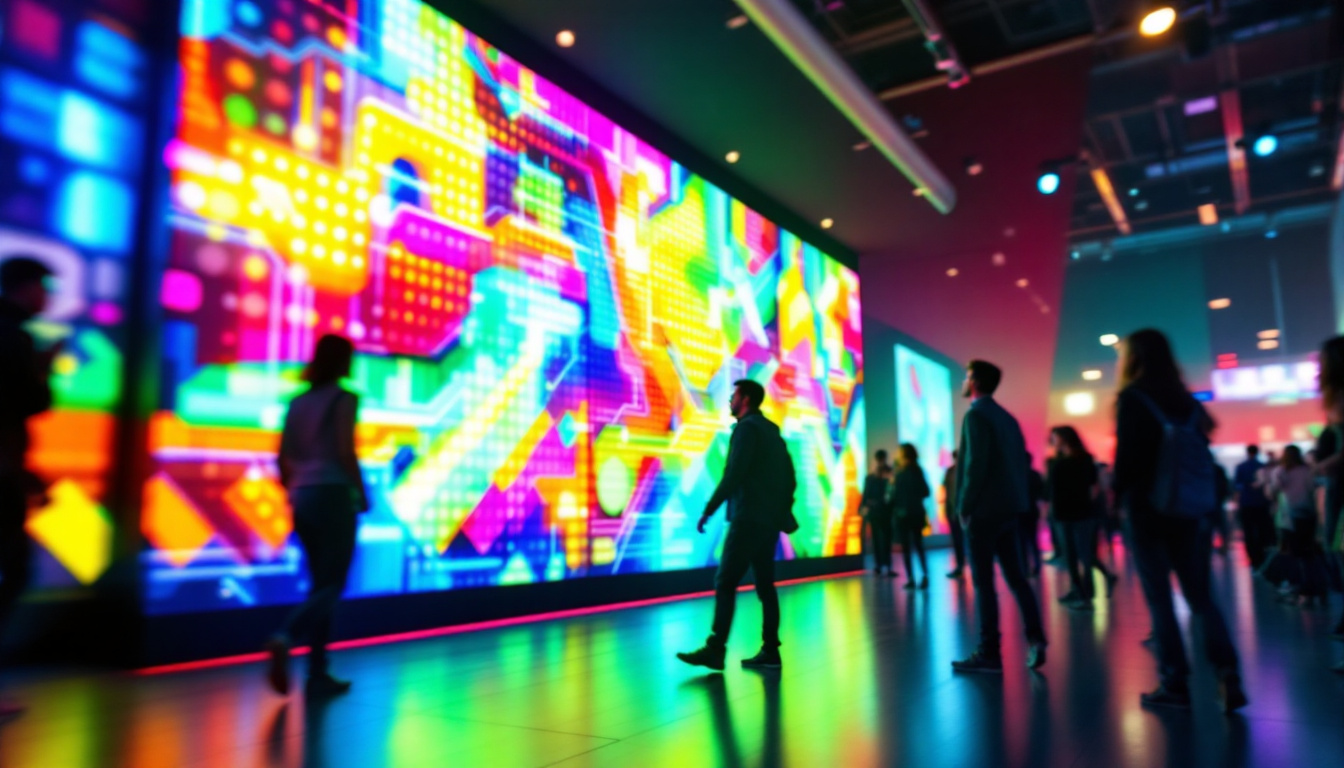In the modern world, the desktop computer has become an essential tool for both personal and professional use. One of the most critical components of any desktop setup is the display. Among various display technologies, LED (Light Emitting Diode) displays have gained immense popularity due to their superior performance and energy efficiency. This article delves into the intricacies of LED displays, exploring their functionality, advantages, and the different types available on the market.
Understanding LED Display Technology
LED displays are a type of flat panel display that uses light-emitting diodes as their source of illumination. Unlike traditional LCDs that rely on fluorescent backlighting, LED displays offer a more vibrant and energy-efficient alternative. The technology behind LED displays is not only innovative but also continuously evolving, leading to better performance and enhanced user experiences. As the demand for high-quality visual content grows, LED technology adapts to meet the needs of various industries, from entertainment to advertising, further solidifying its place in modern technology.
How LED Displays Work
At the core of an LED display is the use of semiconductor materials that emit light when an electric current passes through them. This process is known as electroluminescence. In an LED display, millions of tiny diodes work together to create images by varying the intensity of light emitted. This allows for a wide range of colors and brightness levels, contributing to the overall quality of the display. The precision with which these diodes can be controlled is what enables LED displays to achieve such remarkable clarity and detail, making them ideal for both large-scale installations and personal devices.
LED displays can be categorized into two main types: edge-lit and direct-lit. Edge-lit displays have LEDs positioned around the edges of the screen, which then illuminate the display from the sides. In contrast, direct-lit displays have LEDs distributed across the entire back of the screen, providing more uniform brightness and better color accuracy. Additionally, advancements in technology have led to the development of mini-LED and micro-LED displays, which utilize smaller diodes for even greater precision and improved performance, allowing for features like local dimming and enhanced HDR capabilities.
The Benefits of LED Displays
LED displays offer several advantages over traditional display technologies. One of the most significant benefits is their energy efficiency. LED displays consume less power compared to LCDs and CRTs, making them an environmentally friendly choice. Additionally, they generate less heat, which can extend the lifespan of the display. This energy efficiency not only reduces operational costs but also aligns with the growing emphasis on sustainability in technology, making LED displays a popular choice for businesses looking to minimize their carbon footprint.
Another notable advantage is the improved contrast ratio and color accuracy. LED displays can produce deeper blacks and brighter whites, resulting in a more dynamic viewing experience. This is particularly beneficial for graphic designers, photographers, and gamers who require precise color representation. Furthermore, the rapid response times of LED technology reduce motion blur, making them ideal for fast-paced content such as sports and action movies. As a result, LED displays are becoming increasingly prevalent in homes, offices, and public spaces, transforming the way we consume visual media and interact with technology.
Types of LED Displays
LED displays come in various forms, each designed to cater to specific needs and preferences. Understanding the different types available can help users choose the right display for their desktop setup.
Standard LED Displays
Standard LED displays are the most common type found in homes and offices. They provide excellent image quality and are suitable for a wide range of applications, from general computing to media consumption. These displays typically come in various sizes, allowing users to select a model that fits their workspace. Moreover, many standard LED displays are equipped with energy-efficient features, which can significantly reduce power consumption over time, making them an environmentally friendly choice for consumers. With advancements in technology, many standard LED models now also include features such as flicker-free technology and blue light filters, enhancing user comfort during extended use.
OLED Displays
Organic Light Emitting Diode (OLED) displays represent a significant advancement in LED technology. Unlike standard LED displays, OLEDs use organic compounds to produce light, allowing each pixel to emit its own light. This results in exceptional color accuracy, contrast ratios, and viewing angles. OLED displays are particularly popular among professionals in creative fields due to their superior performance. Additionally, the thin and flexible nature of OLED technology allows for innovative designs, such as curved screens and ultra-slim models, which can enhance the aesthetic appeal of any workspace. The rapid response time of OLEDs also makes them ideal for gaming, providing a smooth and immersive experience with minimal motion blur.
QLED Displays
Quantum Dot LED (QLED) displays are another innovative technology that enhances the performance of traditional LED displays. By incorporating quantum dots, these displays can produce a broader color spectrum and improved brightness. QLED displays are particularly effective in bright environments, making them ideal for users who work in well-lit spaces. Furthermore, QLED technology is known for its longevity and durability, often outlasting other display types. Many QLED models also feature advanced HDR (High Dynamic Range) capabilities, which enhance the overall viewing experience by providing deeper blacks and brighter whites, resulting in a more dynamic image. As a result, QLED displays are increasingly favored by home theater enthusiasts who seek an immersive cinematic experience without compromising on quality.
Choosing the Right LED Display for Your Needs
Selecting the right LED display for a desktop setup involves considering various factors, including size, resolution, and intended use. Each of these elements plays a crucial role in determining the overall performance and user experience.
Screen Size and Resolution
Screen size is one of the first considerations when choosing an LED display. Larger screens provide more screen real estate, which can enhance productivity, especially for multitasking. However, it’s essential to balance size with available desk space. Common sizes range from 21 inches to 34 inches and beyond.
Resolution is another critical factor. Higher resolutions, such as 4K (3840 x 2160 pixels), offer sharper images and more detail, making them ideal for graphic design, video editing, and gaming. For general use, a Full HD (1920 x 1080 pixels) display may suffice.
Refresh Rate and Response Time
The refresh rate and response time of a display can significantly impact the user experience, particularly for gamers and those who work with fast-moving images. A higher refresh rate, measured in hertz (Hz), results in smoother motion and less motion blur. For gaming, a refresh rate of 144Hz or higher is often recommended.
Response time, measured in milliseconds (ms), indicates how quickly a pixel can change from one color to another. A lower response time is desirable for fast-paced gaming and video playback, as it reduces ghosting and blurring effects.
LED Display Maintenance and Care
Proper maintenance and care of LED displays can prolong their lifespan and ensure optimal performance. Regular cleaning and appropriate usage practices are essential to keep the display in top condition.
Cleaning Your LED Display
Cleaning an LED display should be done with care to avoid damaging the screen. It is advisable to use a soft, lint-free cloth and a gentle cleaning solution specifically designed for screens. Avoid using harsh chemicals or abrasive materials that could scratch the surface.
When cleaning, always turn off the display and unplug it to prevent any electrical hazards. Gently wipe the screen in circular motions, ensuring not to apply excessive pressure. Regular cleaning can help maintain clarity and brightness, enhancing the overall viewing experience.
Optimal Usage Practices
To maximize the lifespan of an LED display, it is essential to follow optimal usage practices. This includes avoiding prolonged exposure to static images, which can lead to burn-in effects, especially in OLED displays. Using screen savers or turning off the display during extended periods of inactivity can help mitigate this risk.
Additionally, maintaining a suitable ambient temperature and humidity level can prevent overheating and moisture damage. Keeping the display away from direct sunlight and heat sources can also contribute to its longevity.
Future of LED Display Technology
The future of LED display technology looks promising, with continuous advancements aimed at improving performance and user experience. Innovations such as flexible displays, transparent screens, and enhanced color accuracy are on the horizon, potentially revolutionizing how users interact with technology.
Flexible and Transparent Displays
Flexible LED displays are already making waves in various industries, allowing for curved or bendable screens that can adapt to different environments. This technology opens up new possibilities for design and functionality, particularly in mobile devices and wearables.
Transparent displays, on the other hand, are gaining traction in applications such as augmented reality and advertising. These displays can overlay digital content onto the physical world, creating interactive experiences that blend seamlessly with the environment.
Advancements in Color and Brightness
Future developments in LED technology are also focused on enhancing color reproduction and brightness. Innovations in quantum dot technology and mini-LED backlighting are expected to deliver even more vibrant colors and improved contrast ratios, catering to the needs of professionals in creative fields.
As technology continues to evolve, LED displays will likely become more integrated into daily life, offering users enhanced experiences and capabilities.
Conclusion
LED displays have transformed the landscape of desktop computing, offering superior image quality, energy efficiency, and a range of options to suit various needs. Understanding the technology behind LED displays, the different types available, and how to choose the right one can empower users to make informed decisions for their desktop setups.
As advancements in display technology continue to emerge, LED displays will remain at the forefront, providing exceptional performance and enhancing the way users interact with their devices. Whether for work, gaming, or creative endeavors, investing in a quality LED display can significantly enhance the overall computing experience.
Discover LumenMatrix’s Advanced LED Display Solutions
Ready to elevate your visual experience with the latest in LED display technology? Look no further than LumenMatrix, a pioneer in crafting innovative LED display modules designed to bring your brand to life. Whether you’re in need of an Indoor LED Wall Display for a corporate setting, an Outdoor LED Wall Display for high-impact advertising, or any of our specialized solutions like Vehicle LED Displays, LED Sports Displays, or Custom LED Displays, LumenMatrix has you covered. Our mission is to transform visual communication with digital signage that not only engages but captivates your audience. Check out LumenMatrix LED Display Solutions today and start creating unforgettable visual narratives for your business.

